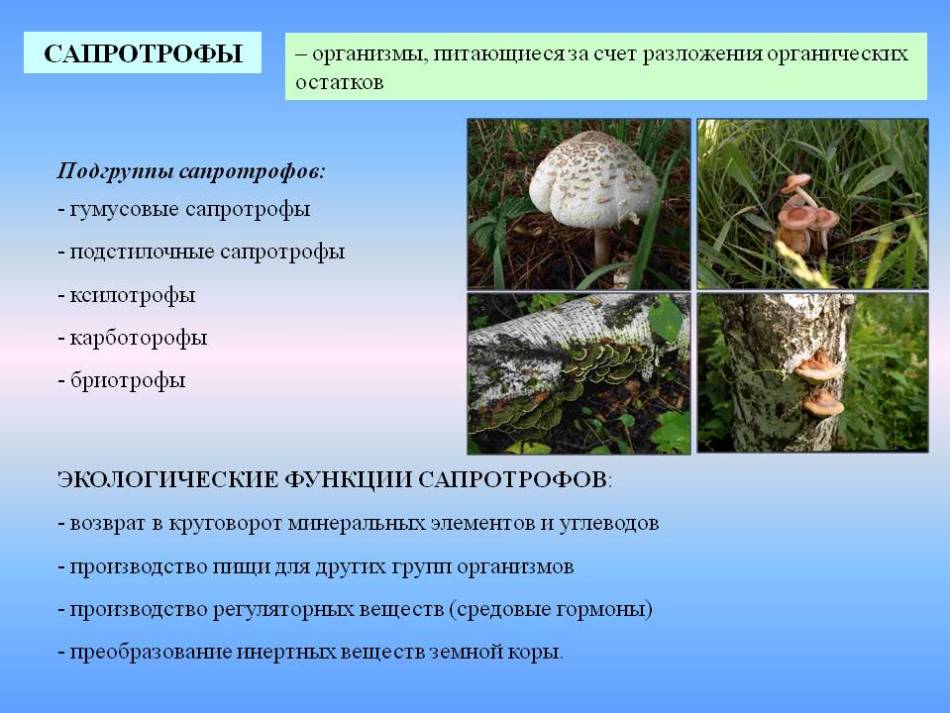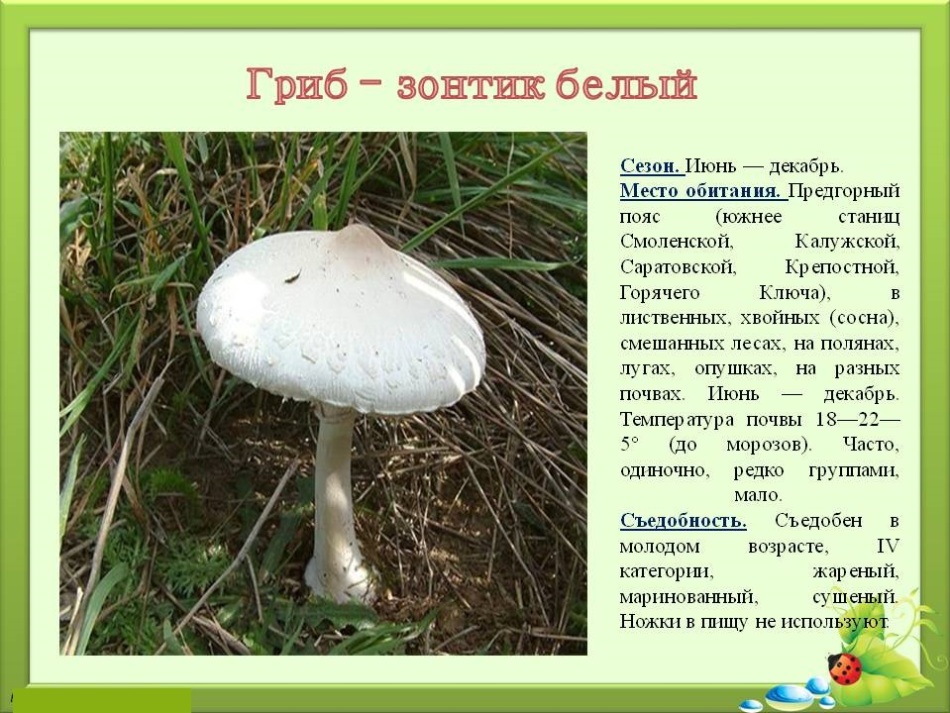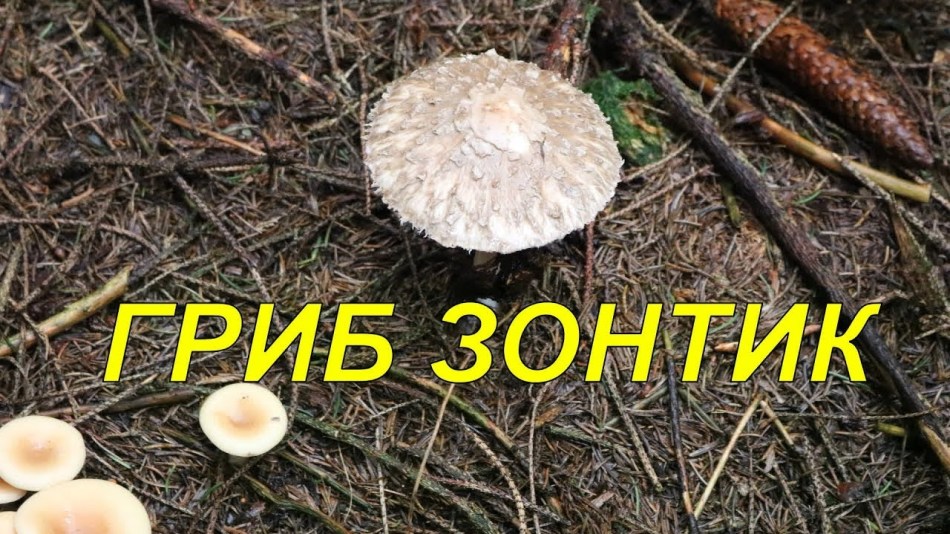From our article you will find out whether the mushroom is edible, get acquainted with its varieties, and also find out where to collect it and how to process it correctly.
Content
- What is the right mushroom-zontik edible?
- The mushroom is edible: what does it look like, what can you confuse with?
- Mushrooms-zontics-edible: varieties, description, photo
- Mushrooms-zontics-poisonous: varieties, description, photo
- How to distinguish a mushroom-zontik from fly agaric, guesses, poisonous mushrooms: comparison, similarities and differences
- How to distinguish a mushroom-zone from champignon?
- Are mushrooms useful umbrellas?
- Can there be poisoning mushrooms and zontics?
- Where and when to pick mushrooms-zontics?
- How to treat mushrooms-zontics?
- Umbrella mushroom, pop - the largest: what does it look like?
- Video: Mushroom-zone. Edible mushrooms
Each of us at least once in his life saw on the edges, in groves, in mixed deciduous forests, a mushroom reminiscent of a pale bog. Most people simply bypass him and never put it in a wallet. But as practice shows, in most cases people are very tasty and healthy mushroom-zontic.
Yes, he also has toxic doubles that are unsuitable, but if you know how to distinguish these two types of mushrooms, then you can safely collect umbrellas and cook delicious dishes from them. In our article we will introduce you to edible and poisonous species of umbrellas, and also teach how to distinguish them unmistakable.
What is the right mushroom-zontik edible?

This forest resident received such an interesting name because of the characteristic structure of its hat. Visually, it very much resembles an open umbrella. That is why people who regularly collect mushrooms began to call it an umbrella. In fact, in a scientific environment, this mushroom has a completely different name. As a rule, scientists mushroom-zone call humus saprotroph. And more precisely, saprotrophic mushroom, which feeds on organic residues decaying in the ground.
IMPORTANT: Due to the fact that the mushroom-zontic as a sponge absorbs absolutely all substances from the soil, it is preferably collecting it in environmentally friendly areas, and as far as possible from lively routes and industrial enterprises. If you collect such mushrooms in a place contaminated with chemical substances, then with a high probability we can say that even an edible species will provoke poisoning of the body.
The mushroom is edible: what does it look like, what can you confuse with?

As already mentioned a little higher, the mushroom zontic has one distinctive feature that allows it to stand out against the background of his relatives. An adult mushroom has a hat resembling an umbrella. Under favorable conditions, its diameter can reach 35 centimeters. The length of the legs can also vary from 5 to 45 centimeters. As a rule, the larger the diameter has a mushroom hat, the longer and thicker its leg.
The hat of the zontic mushroom is covered with peculiar scales, it is dry to the touch. If the mushroom grows very strongly, the skin on the hat begins to crack and translucent fringe forms. The leg of the umbrella is slightly thickened at the base of the soil and has a characteristic movable ring.
The pulp at the mushroom has a light shade, when ragged, it begins to secrete transparent, pleasantly smelling juice. But in this way only adult mushrooms look. If you find a young umbrella, then outwardly it will resemble a small egg on a thin leg. True, his color will be the same, and there will also be scales on the hat.
Most often, this type of mushrooms is confused with toxic doubles or with pale giggles. This is due to the fact that poisonous mushrooms can visually look like umbrellas - have a similar color, size and shape of the hat. But still there are differences between these species. We will tell you about them a little lower.
Mushrooms-zontics-edible: varieties, description, photo
As you already understood, not all mushrooms-zones are edible. Among this species there are toxic representatives who are able to harm the human body. That is why now we will introduce you to edible species of umbrellas. They can quite calmly collect the entire mushroom season and consumed after heat treatment.
Types of edible mushrooms-zontics:

White. This species has another name - field. They call it that because of the color and place of growth. As you already, probably, understood its pulp has a light color. It can be white, cream or light gray. Initially, this species has an egg -shaped hat, which over time opens and becomes like an umbrella. Most often you can find in meadows, fields and open forest edges.

Motley. This type of umbrellas, as a rule, has quite large sizes. The mushroom hat is completely dry and covered with characteristic scales of a brown shade. Also, a small-colored growth of dark brown color is clearly visible on a hat. That is why this type of umbrella has a darker hue than other relatives. The flesh of a variegated umbrella is good, with a pronounced walnut smell. Likes to grow in open, well -lit territories.

Blushing. The hat of this type of umbrella has a gray or brownish shade and a thin, almost white leg, which as the mushroom grows, darkens and thickens at the base of the soil. The mushroom got its name due to the ability of the pulp to oxidize. If you break the umbrella’s hat, then droplets of juice will almost immediately take it on it, which will become reddish-brown very quickly from transparent. In addition, the red umbrella has more developed scales. Since they visually resemble a peculiar fringe, sometimes a blushing umbrella is called shaggy. To grow, he selects the soil useful for nutrients.

Maiden. This type of umbrella is listed in the Red Book, so it is almost impossible to meet it in our forests. The mushroom differs from their relatives in that it does not grow to large sizes. As a rule, a hat even in adult representatives has a diameter of no more than 10 cm. The girl’s umbrella has a light shade of the pulp and not a very pronounced mushroom aroma.
IMPORTANT: The edible umbrellas can also be attributed substructure umbrella. In terms of taste, he practically does not differ from his relatives, but only a hat is considered edible. The leg of this species is very bitter. In view of this, it is better not to eat it. Therefore, if you collect these umbrellas, then immediately remove the leg.
Mastoid. It has a matte light brown hat, the edges of which are lowered down. In the dry period, the skin on the hat begins to crack and a peculiar pattern forms on it. The main difference between the special umbrella from other relatives is the presence of a pronounced hill in the very center of the hat. Visually, it resembles a nipple of brownish color.
Mushrooms-zontics-poisonous: varieties, description, photo
Well, now let's look at the types of poisonous umbrellas. You need to know them, because if you cannot distinguish them from edible, you will bring home a poisonous mushroom that will cause great harm to your body.
Types of poisonous mushrooms-zontics:

Combus. It has a hat with a light brown color with a diameter of up to 5 centimeters. The entire surface of the hat is covered with brown-orange with scales. It has a thin leg up to 10 centimeters long. The leg inside is empty and has a white-pink ring. In addition, this type of umbrella has a rather unpleasant odor.

Chestnut. This type of umbrella is also called leotype chestnut. It has a small hat, which initially resembles an umbrella, but as the mushroom grows completely levels. Another feature indicating the toxicity of the umbrella is the presence of concentric rows on the hat. The leg is thickened, but the ring on it may be absent. More precisely, it is only in young mushrooms, but as soon as the leg stretches in length and thickens, it immediately disappears.

Chlorophyllum is dark brown. This umbrella double contains a hallucinogenic substance that negatively affects the human nervous system, so it cannot be categorically consumed. Visually, this poisonous mushroom looks like an umbrella, but unlike the latter it is more fleshy and has not a very high leg. The leg has a tuber -like growth, which is clearly visible above the surface of the soil. When broken, chlorophyllum immediately blushes.

The fly agaric is smelly. If you think that fly agaric can only have a red hat, then you are deeply mistaken. In nature, there are fly ages of different colors. This species is considered very poisonous, so its use in 85% leads to death. Visually, the fluent flyer is very similar to a young umbrella. Therefore, inexperienced mushroom pickers very often confuse them and put it in a wallet. But if you look closely at him, you can see that he does not have characteristic scales on a hat, and there is also an unpleasant chlorine smell.
How to distinguish a mushroom-zontik from fly agaric, guesses, poisonous mushrooms: comparison, similarities and differences

If you carefully read our article, you probably realized that mushroom zontic can be very easily confused with a poisonous relative or double. For example, a white umbrella can have the color of the pulp the same as a pale executive. In addition, in poisonous mushrooms, the hat has a form almost the same as an umbrella. Above, we already mentioned the fly agaric with a smelly, which is visually very similar to a young umbrella.
But unlike the last, his hat and leg are covered not very pleasantly smelling raid. Therefore, if you, after cutting a mushroom, sniff it, then immediately understand that you have a naughty. Another difference between mushrooms is points on the hat. At the umbrella, they are always a dark shade-dark gray, dark brown, dark beige.
In poisonous mushrooms, the points are white, sometimes with a greenish tint. And, of course, do not forget that most of the poisonous mushrooms have the base of the earth Club -shaped education or the so -called wrapperThe leg is wrapped slightly above the soil level. In mushrooms, the legs are straight leg without growths with a slight thickening at the ground or at the base of the hat. This feature depends on the type of umbrella.
How to distinguish a mushroom-zone from champignon?

In principle, anyone can distinguish a mushroom-zontic from a champignon of ordinary. We most often see this type of champignons on the shelves of stores, so there should be no difficulties. Most often, to grow, such a champignon chooses meadows, fields, gardens and even gardens. It has white pulp and a hemispherical hat forum. The edges of the hat are connected to the leg with a white film. As you can see, the champignon visually is very different from the mushroom zontic.
True, it should be borne in mind that there are two more types of champignons - forest and field. They are visually more like a mushroom zontic. They have a more open hat with a barely noticeable tubercle in the very center. Perhaps the most noticeable difference between these two forest residents is the color and smell of pulp. As for the smell of champignons, it is usually almond. The color is initially also white, but if the mushrooms are cut, it will begin to pink, and then the cut will become a reddish or grayish shade.
Are mushrooms useful umbrellas?

Surely you heard that mushrooms are able to benefit the human body. Provided, of course, that they are edible and collected in the right place. In view of this, with confidence we can say that an umbrella with the right use can improve your well -being. Its composition contains substances that have a weak antitumor effectthereby slowing down the development of benign neoplasms.
In addition, these substances have a positive effect on the cells of the body, helping that they are regularly updated and do it right. Also, mushrooms-zontics positively affect hematopoiesis and work of the cardiovascular system. And, of course, do not forget that all mushrooms have very low glycemic index. Therefore, if you want to lose weight, be sure to include this product in your diet.
Can there be poisoning mushrooms and zontics?

You can get poisoned with mushrooms in several cases. So, if you collect mushrooms of doubles or poisonous fly agaric, then you will definitely be poisoned. Therefore, going for a quiet hunt, try to examine every mushroom as carefully as possible. Look closely at its color, sniff, if there is a suspicion, then break and look at the juice. All this will help you avoid further problems.
You can also poison with edible mushrooms. If they are collected in an ecologically dirty place, the toxic substances that they have will begin to negatively affect the gastrointestinal tract and a person will manifest all symptoms of poisoning. Problems with the gastrointestinal tract can also arise if you eat too many mushrooms-zontics. Since their composition contains substances that slow down the production of gastric juice, excessive use of this product can provoke diarrhea, nausea and vomiting.
Where and when to pick mushrooms-zontics?

As you already, probably, understood to meet a mushroom-zontik can be absolutely everywhere. Since this mushroom is not very whimsical, he feels perfectly wherever there are favorable conditions for him. For abundant fruiting, he needs enough moisture and light. In view of this, to grow, he chooses sunny areas with a moderate amount of moisture. Depending on the species, it can grow both single and large groups.
You can find an umbrella mushroom in deciduous, coniferous and mixed forests. The first young mushrooms appear at the end of May, early June. The seasoning season ends At the end of September, mid -October. As a rule, at the end of October, umbrellas disappear as for their normal growth, in addition to moisture and light, it is also necessary to heat. That is why even in summer in cold periods you can observe a sharp decrease in the number of this type of mushrooms.
How to treat mushrooms-zontics?

In principle, the treatment of mushrooms-zonics is also held, like any others. At the initial stage, you will just need to clean them of dry grass, leaves and soil. Since the hat of the umbrellas is dry and not very sticky, you can handle this task easily. Next, you will need to clean the leg of the soil, and immediately cut it off. As a rule, the legs and hats of these mushrooms are boiled separately.
This is due to the fact that in some species they give bitterness, which can ruin the taste of the finished dish. If you are sure that you do not have such umbrellas, you can make hats and legs together. After dealing with the legs, you can start taking a scaly film from the hat. At the final stage, it remains only to rinse the mushrooms in a large amount of water and it will be possible to boil them, fry or dry them.
Umbrella mushroom, pop - the largest: what does it look like?

Umbrella mushroom, pop -This is a large size mushroom-zontic, which has a dense, but juicy pulp with a pleasant aroma. This species is considered edible, though you must remember that the older the umbrella, the rougher and less juicy will be its pulp. Visually umbrella pop is practically no different from its relatives from the champignon family. He also has a light pulp with a gray or beige shade, a straight leg and characteristic scales on a hat.
But the shape of the hat itself is slightly different. In young mushrooms, it also has the shape of an umbrella, but as soon as the mushroom reaches its maturity, it becomes like a saucer with a small bulge in the center. Some differences also concern the legs. Initially, it has a brownish color, but the older the umbrella becomes, the more it drills and small scales of dark color appear on it.








